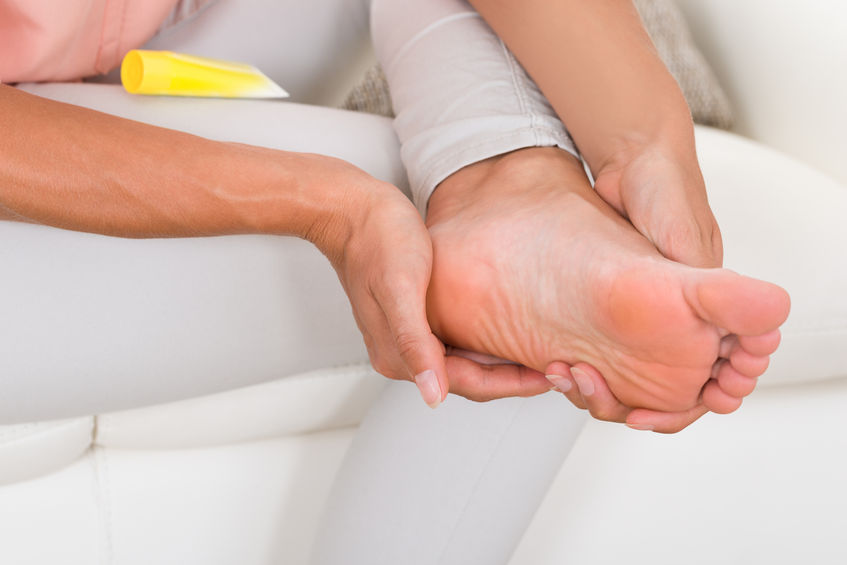

Why do my heel still hurt? I bought the Healing Sole and still have pain! There are a number of reasons that one’s heel may hurt. Plantar fasciitis is simply the most common reason that an individual’s heel hurts. In fact, 11-15% of all visits to doctors for foot pain are due to plantar fasciitis. Nonetheless, there are other reasons for pain in that region. Usually, if conservative treatment fails to relieve the pain associated with a diagnosis of plantar fasciitis, the diagnosis is wrong. Here are a few other reasons that your heel may hurt. We advise that you visit a professional healthcare provider and discuss your condition! Calcaneal Stress Fracture Stress fractures are not typically visible on radiographs. However, a bone scan or an MRI will generally pick up this condition.Calcaneal stress fractures occur in weak bone used normally or normal bone used abnormally.In other words, an individual with osteoporosis may develop a stress fracture with normal activities. A person with normal bone mass that suddenly increases activity can develop a stress fracture. Plantar Fascia Tear or Rupture This is a trauma-related reason to have heel pain. An actual tear in the plantar fascia or a rupture may occur whenever there is a sudden, rapid load to the heel. This is particularly true if a rapid and large stretch is placed on the plantar fascia as well. Ruptures will not respond to normal conservative treatments. Fat Pad Pain or Disorders The fat pad under the heel is a very specialized structure in the foot. This fat is configured like a honeycomb and was designed to accept large vertical loads. If there is damage to fat pad from either trauma or steroid injections, this will be extremely painful. The fat pad is the natural structure that provides cushion to the body; if it is thin or damaged it cannot do that. A Pinched S1 Spinal Root The S1 nerve root exits the spine at the sacrum. This nerve root is responsible for sensation at the heel. If there is a compression of that nerve from a disc in the spine or from arthritic spurring, then heel pain may result. Normal conservative treatments for plantar fasciitis are generally not successful if the pathology is emanating from above. Entrapment Neuropathy of the 1st Branch of the Lateral Plantar Nerve This structure is also called ‘Baxter’s nerve’. This small sensory nerve branch travels between two muscle bellies at the level of the heel (on the medial or inside aspect of the heel). It may develop a neuropathy or just undergo simple compression when the muscles swell with standing, walking or running. The zone for which this nerve is responsible for providing sensation is at the plantar fascia. A 1st branch compression lesion is often misdiagnosed as plantar fasciitis. Entrapment Neuropathy of the Medial Plantar Nerve The medial plantar nerve travels from behind the medial (inside) ankle to the bottom of the foot at the instep region. Muscle bellies, fascial bands of tissue, swollen veins or ganglion cysts may compress this nerve. The pain from such compression of this nerve branch is severe and often mimics the pain of plantar fascia. Bone Spurs That Compress the Fascia, Nerve and/or Fat Pad 50% of those with plantar fasciitis have a bone spur. While the spurs themselves have never been proven to be the actual cause of plantar fasciitis, they do contribute to pain. Studies have shown that larger spurs are associated with larger pain. The nerve may compress and crush nerve branches, the fat pain and/or the fascia itself. In summary, if you continue to have severe heel pain after treatment, perhaps seek your physician’s opinion and/or a second opinion as to the true diagnosis. 






